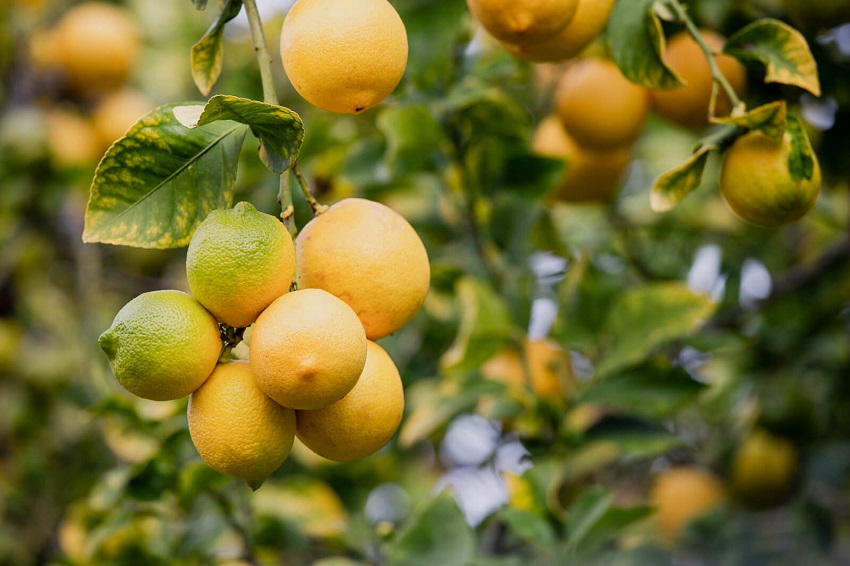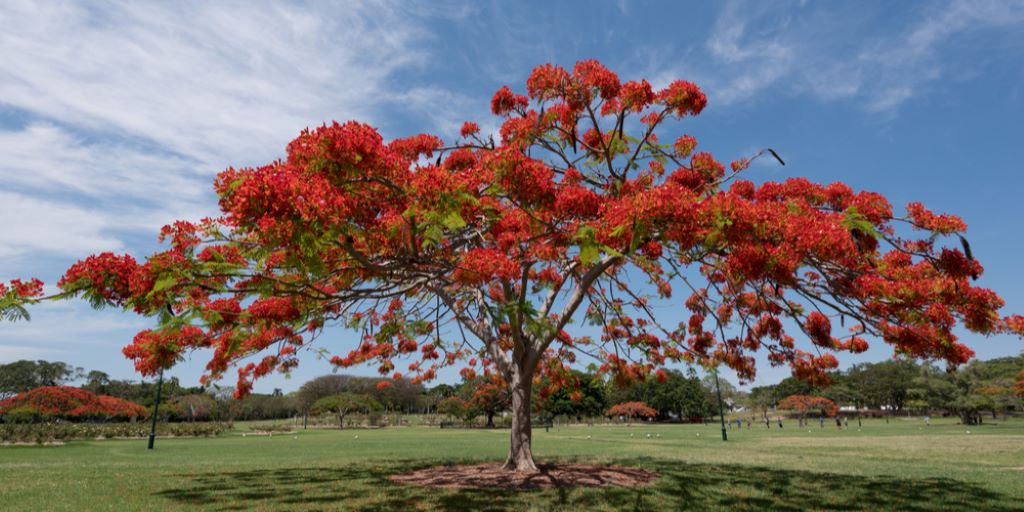Lemons are bright, tangy, and versatile fruits that are beloved by people all around the world. Not only are lemons a staple in many cuisines, but they also offer numerous health benefits. When it comes to growing lemons, they thrive best in specific conditions that provide the right mix of warmth, sunlight, and soil composition. In this article, we will explore the ideal growing conditions for lemons, the best locations for lemon cultivation, and some tips to ensure your lemon tree flourishes.
Understanding the Ideal Growing Conditions for Lemons
Lemons originate from subtropical regions, and therefore, they thrive when they are provided with similar conditions. To grow lemons successfully, it’s important to consider the following factors:
1. Climate
Lemons prefer a warm and sunny climate, with temperatures ranging between 70°F and 95°F (21°C – 35°C). They are susceptible to frost and cannot tolerate freezing temperatures. Ideally, lemon trees require a frost-free period of at least 240 days to produce a bountiful harvest. It’s important to note that lemon trees can be grown in containers indoors or in greenhouses in colder climates. Understanding the different lemon tree growth stages is important for proper care and maintenance.
2. Sunlight
Lemon trees are sun-loving plants and require full sun exposure to flourish. Aim for at least 6-8 hours of direct sunlight daily for optimal growth and fruit production. Insufficient sunlight can result in a reduced yield and poor fruit quality. Choose a location for your lemon tree that ensures it receives ample sunlight throughout the day.
3. Soil
Lemons thrive in well-draining soil with a slightly acidic to neutral pH level ranging from 6.0 to 7.0. The soil should be rich in organic matter and have excellent water-holding capacity. To improve soil drainage, consider amending it with organic compost or well-rotted manure. Additionally, ensure that the soil is loose and friable to promote good root development.
The Best Locations for Growing Lemons
Lemons are grown in various regions across the globe, but they flourish best in specific geographical locations. Some of the best locations for growing lemons include:
1. Mediterranean Region
The Mediterranean region, known for its mild and sunny climate, provides an ideal environment for lemon cultivation. Countries such as Italy, Spain, Greece, and Morocco are renowned for their lemon production. The combination of warm summers and mild winters in this region creates the perfect conditions for healthy lemon trees and high-quality fruit.
2. California, United States
California, particularly the southern and coastal areas, is well-suited for growing lemons. The Mediterranean-like climate, with its warm and dry summers and mild winters, mimics the natural habitat of lemon trees. The state’s fertile soil, ample sunshine, and proximity to the Pacific Ocean make it an ideal location for commercial lemon farming.
3. Florida, United States
Florida is another prominent region in the United States for lemon cultivation. The warm and humid subtropical climate, abundant rainfall, and well-draining sandy soil make it an excellent environment for lemon trees to thrive. The southern and central parts of Florida, including the famed Indian River region, are known for their commercial lemon production.
4. Southeast Asia
Lemons are also widely cultivated in Southeast Asian countries such as India, Thailand, and Vietnam. The tropical climate in these regions, characterized by high temperatures, abundant rainfall, and high humidity, offers favorable conditions for lemon trees. Additionally, the acidic soil found in many parts of Southeast Asia provides the necessary nutrients for healthy growth.
Tips for Growing Lemons Successfully
To ensure your lemon tree thrives and produces a plentiful harvest, consider the following tips:
1. Select the Right Lemon Variety
There are various lemon varieties available, each with its own distinct characteristics and growing requirements. Some popular lemon varieties include Eureka, Lisbon, Meyer, and Ponderosa. Research and choose a variety that suits your local climate and preferences.
2. Provide Adequate Watering
Lemon trees require regular and consistent watering to prevent the soil from drying out. The soil should be kept evenly moist, but not waterlogged, as excessive water can lead to root rot. Water deeply and infrequently, allowing the soil to dry partially before the next watering. Mulching around the base of the tree helps retain soil moisture.
3. Fertilize Regularly
Lemon trees are heavy feeders and require regular fertilization to maintain their growth and fruit production. Use a citrus-specific fertilizer that contains the necessary nutrients such as nitrogen, phosphorus, potassium, and trace elements. Follow the manufacturer’s instructions for application rates and timing.
4. Prune and Thin the Tree
Pruning is essential to maintain the shape and health of your lemon tree. Remove any dead, damaged, or crossing branches. Thin out the canopy of the tree to promote air circulation and sunlight penetration. Regular pruning also helps control the size of the tree, making it easier to manage.
5. Protect from Pests and Diseases
Monitor your lemon tree regularly for common pests such as aphids, scale insects, and citrus leaf miners. Use organic pest control methods or appropriate insecticides when necessary. Additionally, take preventive measures to avoid diseases such as citrus canker and citrus greening by practicing good sanitation and cultural practices.
Conclusion
Lemons thrive in warm, sunny locations with well-draining soil and an extended frost-free period. Geographical regions such as the Mediterranean, California, Florida, and Southeast Asia offer the ideal climate and conditions for optimal lemon cultivation. By providing ample sunlight, well-drained soil, and proper care in terms of watering, fertilization, pruning, and pest control, you can enjoy the benefits of growing your own lemons.
Remember that while lemons require specific conditions, they can also be grown in containers or greenhouses in colder climates, allowing people worldwide to enjoy these zesty fruits. By following the tips outlined in this article, you’ll be well on your way to growing healthy lemon trees and harvesting your own bountiful crop of lemons.
Frequently Asked Questions
- Can I grow lemons in containers indoors?
Yes, lemons can be successfully grown in containers indoors, especially in colder climates. Choose dwarf or compact lemon tree varieties suitable for indoor cultivation, ensure they receive adequate sunlight, and provide proper care in terms of watering and fertilization.
- Can I grow lemons from seeds?
Yes, lemons can be grown from seeds. However, it’s important to note that lemon trees grown from seeds may take longer to bear fruit and may not produce fruits true to the parent plant. It’s more common to propagate lemon trees through grafting or budding to maintain fruit quality and characteristics.
- How often should I fertilize my lemon tree?
Lemon trees should be fertilized regularly to provide the necessary nutrients for healthy growth. For mature trees, it’s recommended to fertilize every 4-6 weeks during the growing season (spring and summer). Follow the recommended application rates and use a citrus-specific fertilizer to ensure proper nutrition.
- What are common pests and diseases that can affect lemon trees?
Lemon trees can be affected by pests such as aphids, scale insects, citrus leaf miners, and citrus psyllids. Diseases that commonly affect lemon trees include citrus canker, citrus greening, and fungal infections. Regular monitoring and prompt action using appropriate pest control methods can help mitigate these issues.
- How long does it take for a lemon tree to bear fruit?
The time it takes for a lemon tree to bear fruit can vary depending on various factors such as the tree’s age, variety, and growing conditions. On average, lemon trees may start producing fruit within 3-5 years of planting, although some varieties may bear fruit earlier. Patience and proper care are key to successful lemon tree fruiting.











